TL;DR: I never should have purchased this game.
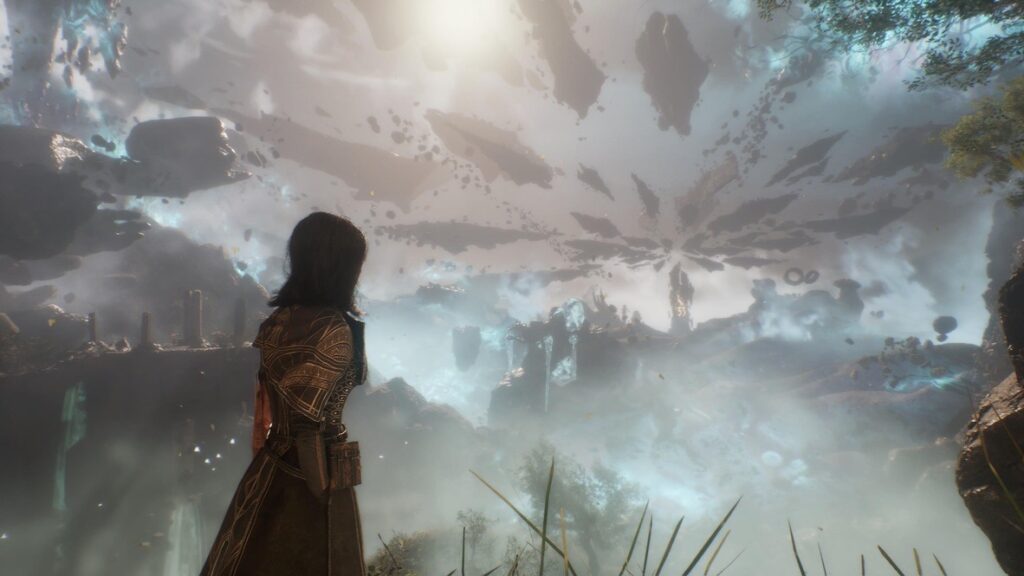
Warning
As I type these words, I’m filled with “gamer’s rage.”
If you’re not a video gamer, you may not understand this.
If you are, you’re familiar with the feeling: The one that makes you pray that a game’s designers suffer from spontaneous castration due to various unrelated causes.
Please keep everything I say below in that context.
Perhaps I’ll edit these words later. Or perhaps not.
What is Expedition 33?
It’s a type of game known as a JRPG, short for “Japanese Role Playing Game”.
Expedition 33 was made by a by a French company, Sandfall Interactive, so it’s obviously not Japanese. Instead the term refers to a game where the characters gain power in the same mode as they do in table-top role-playing games, namely gaining experience points. In a JRPG, combats are conducted in a stylized arena. Combat is turn-based.
Each entity in the battle has its place in the turn order. When it’s your character’s turn, you have time to decide what your character wants to do: attack, cast a spell, consume a healing potion, etc. Generally in this sort of game you can take as much time as you need to look over alternatives and make a choice.
The only JRPGs I’ve seen are story-based: You go from combat to combat, with a story linking them.
If you’re familiar with my previous video-game essays, you know that it’s all about the story for me. I’m not all that interested in the combat, except that it serves to get from one story element to another.

If the story is good enough, I’ll tolerate some combat to get to the next plot point. I’ll never purchase a game because of how good its combat system is supposed to be, since I’ll never appreciate that aspect of the game.
Why did I purchase the game?
I was aware that Expedition 33 existed. The ads made it look pretty. But I’m not generally interested in JRPGs.
I was (and continue to be) immersed in the story-driven world of Baldur’s Gate 3. I wasn’t particularly looking for a new game to play.
I subscribe to the YouTube channel of the on-line video gamer Luality. She was livestreaming her playthrough of Expedition 33. I caught her battle with the Lampmaster.
The combat didn’t seem all that difficult, and the Lampmaster’s design was unique. Still, it will take more than good creature design to make me buy a game.
Then, after the battle, there was a big emotional story beat. Luality, who normally accompanies her playthroughs with constant commentary, fell silent. The comments in the chat stream were an almost uniform “WOW!”.
I didn’t fully understand why they reacted this way. But I thought that any game that could provoke such a reaction to its story was worth buying.
I didn’t appreciate the impact of the moment myself, but felt that I would when I played the game myself and I understood it in context.
I did a bit of research. The voice talent behind the game was considerable, including: Charlie Cox (Daredevil in the Marvel TV series); Jennifer English (Shadowheart in BG3); Andy Serkis (best known for playing Gollum in the LOTR movies). The game included an easy difficulty mode.
I got the game.
Big mistake.
Let’s start with the positives
Before I dive into my complaints and why I rage-quit the game (twice!), let me acknowledge the game’s good points.
Art
First and foremost, the game is beautiful. The general world design takes its inspiration from fin de siècle Paris.
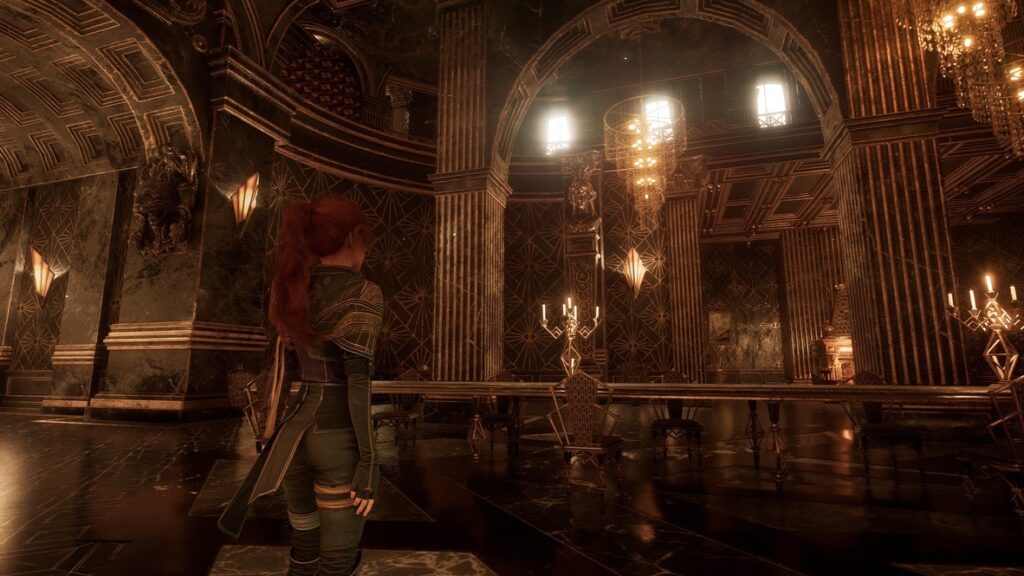
Every frame of the game is lovely. Every environment is expertly crafted. If there were any frequently re-used elements (as in Skyrim) I did not notice them.
Expedition 33 is indeed a work of art.
Music
While there are no individual songs that stand out in the game’s “soundscape,” the overall quality of the music is great.
Most of the key battles have individual music scores that reflect the combat’s intensity or story elements. A combat that deals with the somber feelings of a character might have a sad theme; a combat versus a cute mechanical creature might have a light-hearted theme.
Listening to the soundtrack as the game pounds against you for half an hour, ending in failure, decreases my affection for the music. However, I’ll acknowledge the efforts of Lorien Testard, the lead composer, even though I had difficulty appreciating it at many points.
Story
The story is everything it had promised to be from both the ads and from Luality’s livestream.
The summary: The game is set in another world. Every year the citizens of Lumiére gather at the docks. They watch as a figure called the Paintress changes a number inscribed on a distant rock.
This year, the number changes from 34 to 33. This means that everyone older than 33 simply vanishes into red and white flower petals.
This has been going on for 67 years. The Paintess has counted down from 100 to 33. In every prior year, the people of Lumiére have sent an expedition across the sea to find the Paintress and stop her. None have returned.
This year it’s the turn for Expedition 33.
There’s some world-building behind these ideas: What’s parenthood like when you know that you won’t live long enough to see your children become an adult? How do you plan for a future when the Paintress inevitably counts down to 12 and lower?
Although terms like this are subjective, I have to describe this as a very “French” story, filled with melancholy and philosophical musings.
It’s an original concept. I wished I could have enjoyed it.
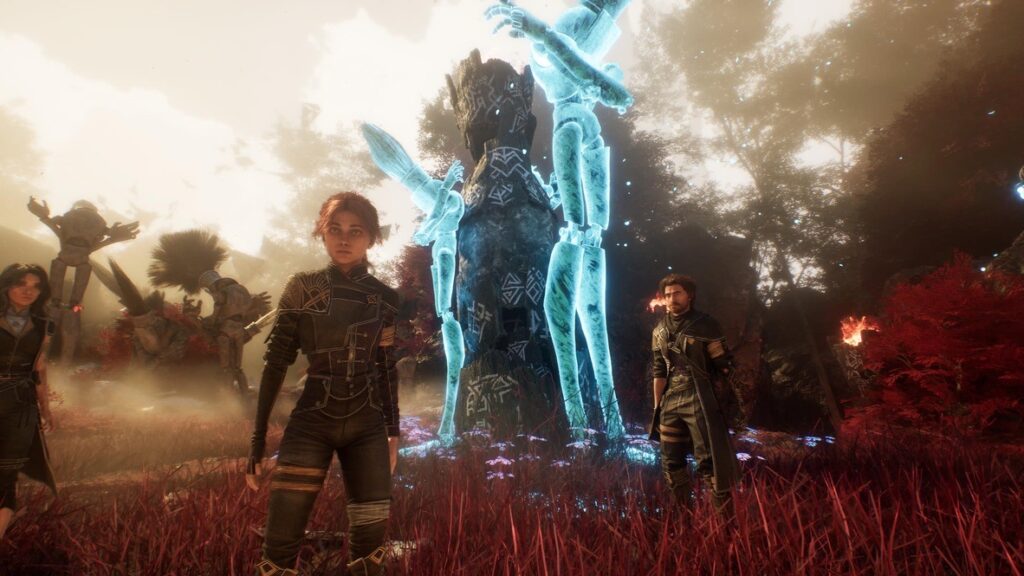
I got to the “big moment” I’d seen in Luality’s livestream. Now I understood what it meant.
But it had no impact on me. Any emotional response to the story was overwhelmed by my increasing irritation with the game.
So let’s get to that.
What’s my problem?
The gameplay.
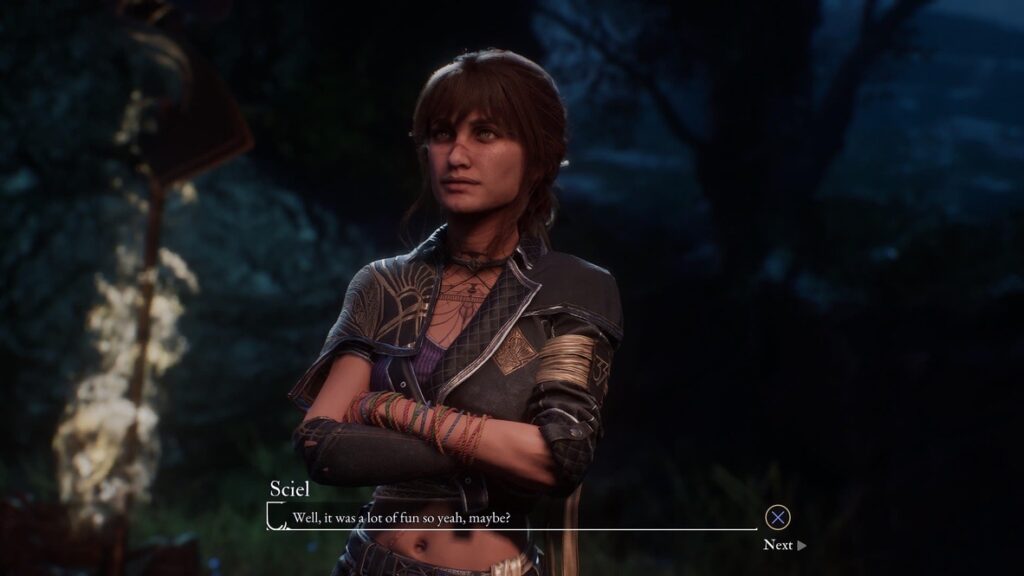
My overall complaint can be summarized as “lack of guidance.”
Let’s break that down.
No maps
That’s not strictly true. There are areas of the game in which you can see a map. These are used to offer an opportunity to camp and navigate to your next destination.
However, within those destinations (e.g., the Stone Wave Cliffs) there’s no minimap or equivalent that you might find in other games.
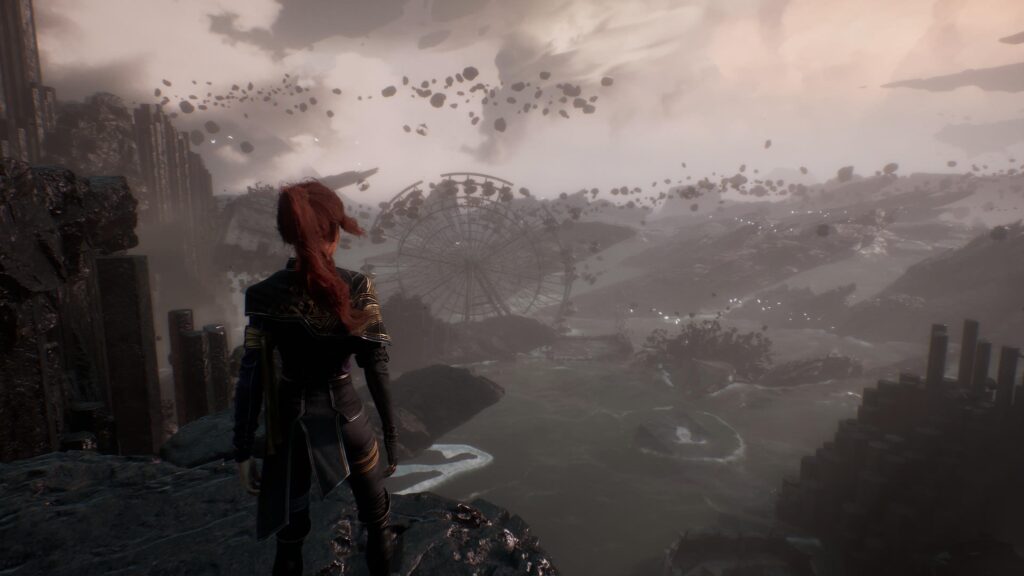
This is more “realistic” I suppose. But these environments are complex, with many twisting passages and dead ends. Many times I thought I was making progress through a zone, only to find myself at the beginning again.
It wouldn’t be a problem if free exploration were a good idea. But it’s not. There are creatures lurking all over the place. Getting lost may mean getting involved in many lengthy combats.
I’ll get into my problems with combats below. For now, let’s just say that exploration takes effort. There’s little incentive to go on side quests when they may delay you, or cause you to lose what little orientation you possess.
Each zone has a few “flags” that you can use as save points. You can also use them to “rest” and restore your hit points and potions. But if you do that, all the creatures in the zone respawn.
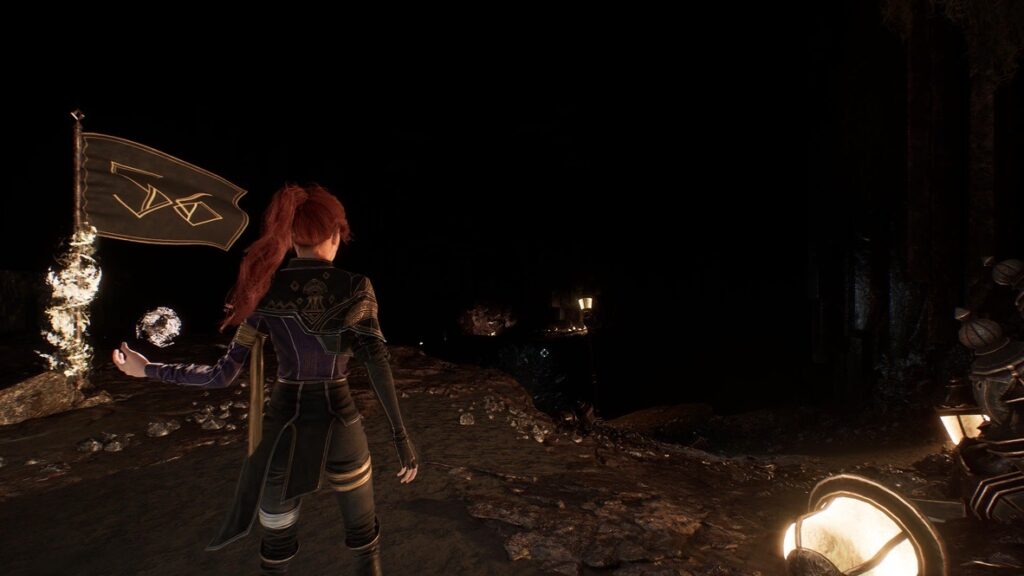
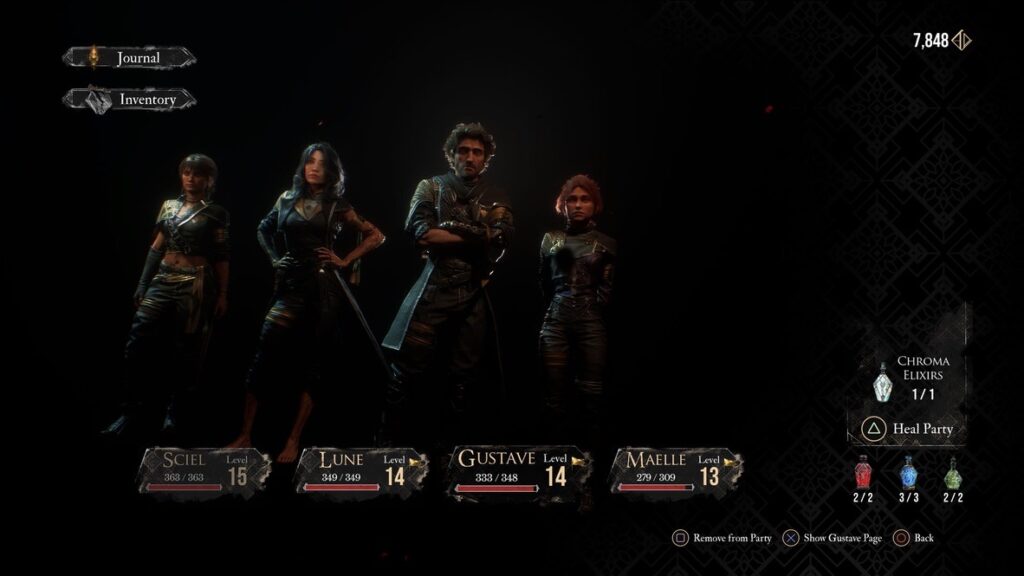
I understand that creature respawns happen in Dark Souls and Elden Ring. I never played those games, due to how punishing they are. It appears that Expedition 33 aspires to do the same thing… even in its easiest difficulty setting.
More on that later.
No explanations
There are a few brief tutorial screens you see as you play the game. But once you see one of them, there’s no way to see it again.
Many games offer a journal or some other way to look up tutorials within the game. Expedition 33 doesn’t have this.
If you miss or forget a screen, you’re screwed.
Character abilities
Here’s an example: I recruited a character named Sciel. An explanation popped up for her abilities, which involved a complex relationship between “Foretells”, “Dark magic”, and “Light magic.” I didn’t have the time or interest at that moment to wade through pages of verbiage, especially since I didn’t plan to have Sciel in my regular party.
Later, after everyone in the main party was killed and Sciel was substituted in, I had no immediate way to look up how to play her.
Yes, I suppose I could have looked it up on the web. Is that how the game’s designers intended for Expedition 33 to be played? With a web browser by your side?
Apparently.
Arcane terminology
Beyond that, as you level up your characters, you gain Pictos and Lumina. If you ask “What are those?” my answer is that I don’t know, and I’ve played the game for about 25 hours.
If there were explanations (I don’t recall any), they disappeared on tutorial pages that I can no longer access.
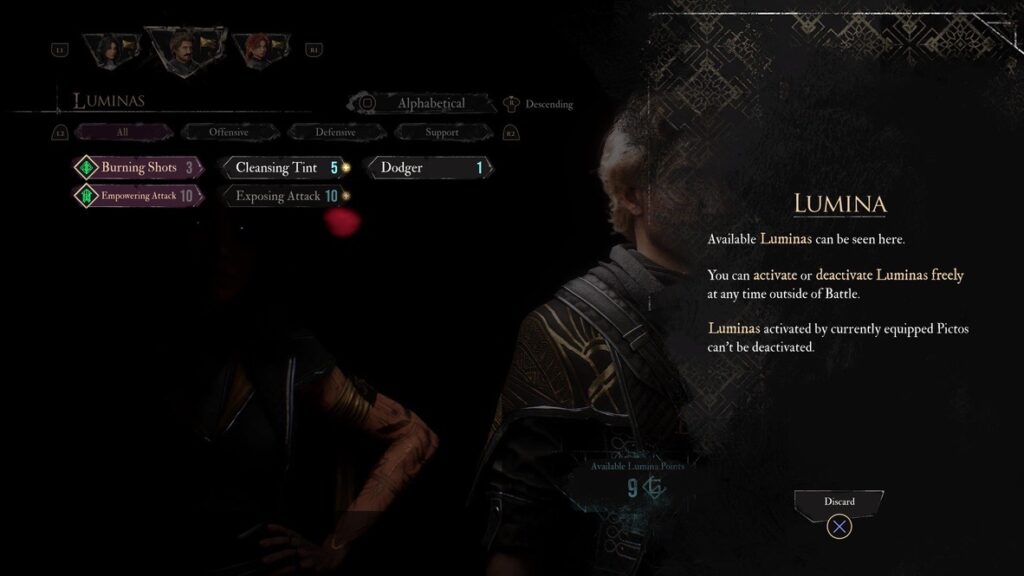
Without that information, I couldn’t tell which Pictos were best assigned to which characters, or how or why one character spending Lumina on a Picto affects another character’s use of it.
Gradually I figured out that skills are abilities that you can choose to use, while Pictos are ongoing status effects that have no costs within combat. Lumina has something to do with the ability to activate or use Pictos, but it was never clear to me how that worked.
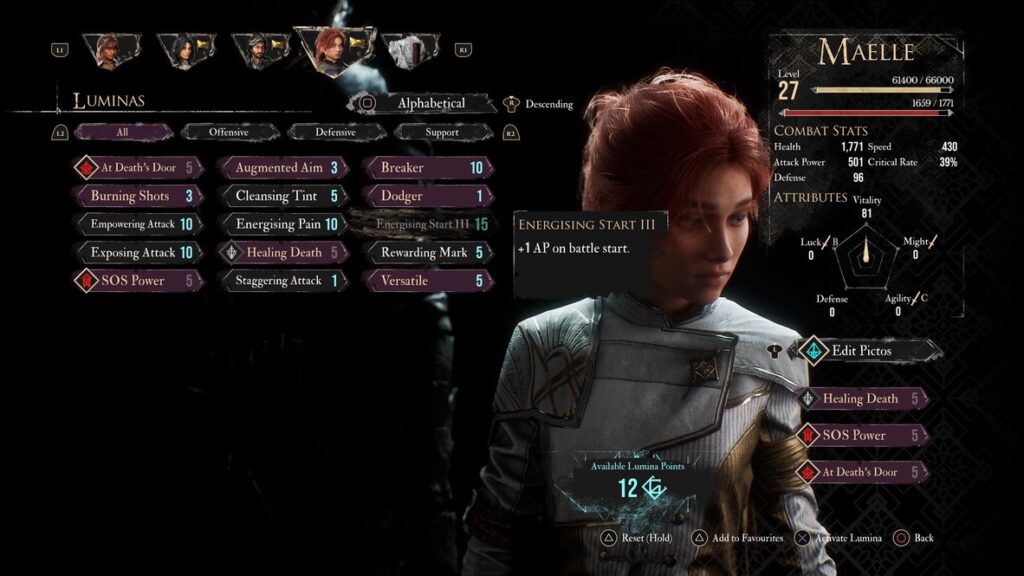
Unfamiliar labeling
It’s a similar deal with weapons. What do the letters mean on the weapon description? Is B better than C? Is it better to pick a C weapon with more damage over a B weapon with less damage?
There are no clues within the game.
Again, the designers seem to think that players will go to the web for this information.
A bit of slack
I’ll cut the designers a tiny bit of slack: It may be that Picto, Lumina, and weapon letter grades are so standard in modern JRPGs that they felt it would insult the intelligence of the players to define them.
Please insult my intelligence.
(You can insult my reflexes too. We’ll get to that part of the essay later.)
A basis for comparison
From this point forward, I’m going to start comparing Expedition 33 (E33) with Final Fantasy X (FFX). The reason is that it’s the JRPG that’s closest to E33 that I’ve played.
(I’ve played another JRPG, Final Fantasy XV. However, that game’s combat is different enough from the two above that a comparison is not appropriate.)
Skill system
The skill system for E33 is less complex that that of FFX. But it’s no less unforgiving.
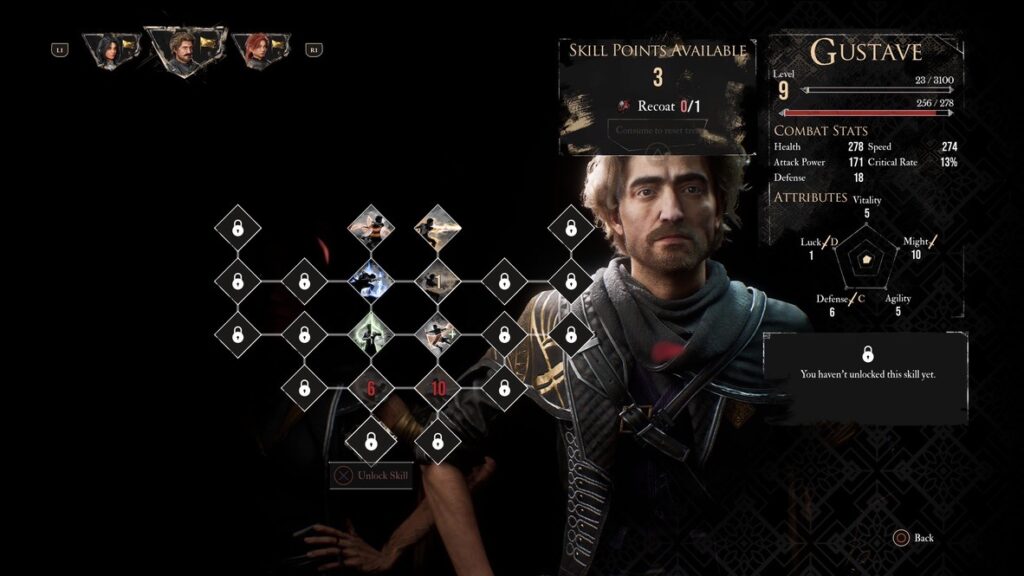
As you can see from the picture, skills in E33 are organized into trees. Each character has their own tree. The geometry of each tree is unique to that character.
A character gains 1 skill point per level. In the image you can see that one of the skills costs 6 point, another costs 10. If you want both those skills, it’s going to cost you 16 levels worth of effort.
Not all these skills are equally useful. There are descriptions of each skill, but there’s nothing that prevents you from picking a set of skills that doesn’t help for that particular character. Since each character’s potential skill set is different, figuring out what’s useful for one character doesn’t help you decide what might be useful for another.
Skill decisions are not necessary permanent, but it can be expensive to change your mind. In the image, you can see (in the upper right) “Recoat 0/1”. A “Recoat” resets how you’ve spent skill points so you can start fresh.
In this picture, you can see that by Level 9 I had not earned a single Recoat. Like FFX, if you make a mistake with your skills, you may be living with it for quite some time.
Lots of games have skill trees of this sort. My complaint here is that, with combats so punishing (more on that below), making a mistake in skill allocation may condemn you to many difficult combats until you’ve earned more skill points or gain enough “Chroma” (the game’s currency) to purchase a Recoat from a merchant.
For me, this was brought home forcefully when I encountered a creature that was healed by Fire attacks. Almost all the skills of the character Maelle are fire-based. Therefore, her attacks were mostly useless in that combat.
Like FFX, if you don’t already know the skills and the consequences for choosing them, you can get badly stuck.
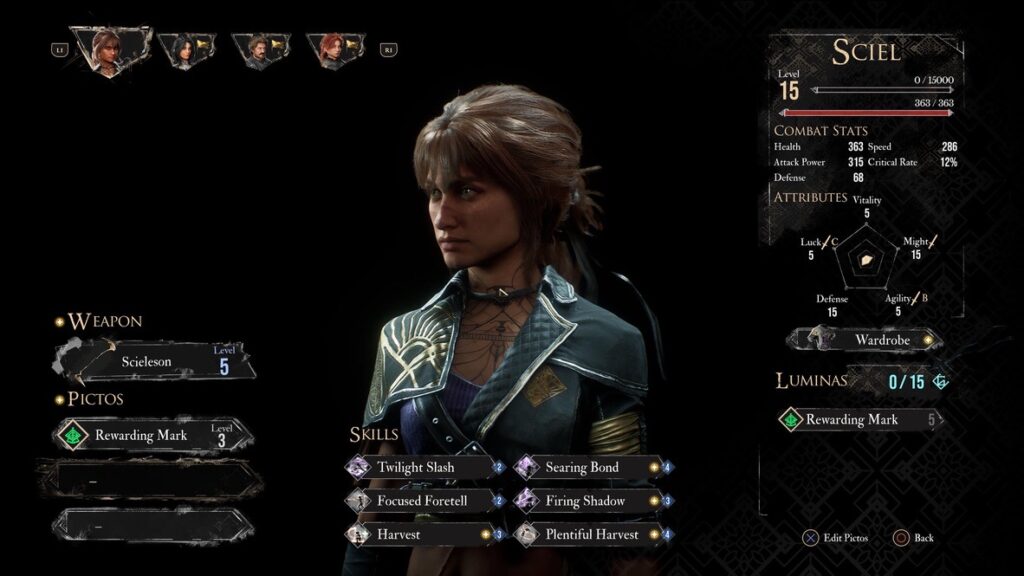
Attributes
In addition to skill points, as you go up in level you earn points to improve your attributes. These are fairly standard for this type of game.
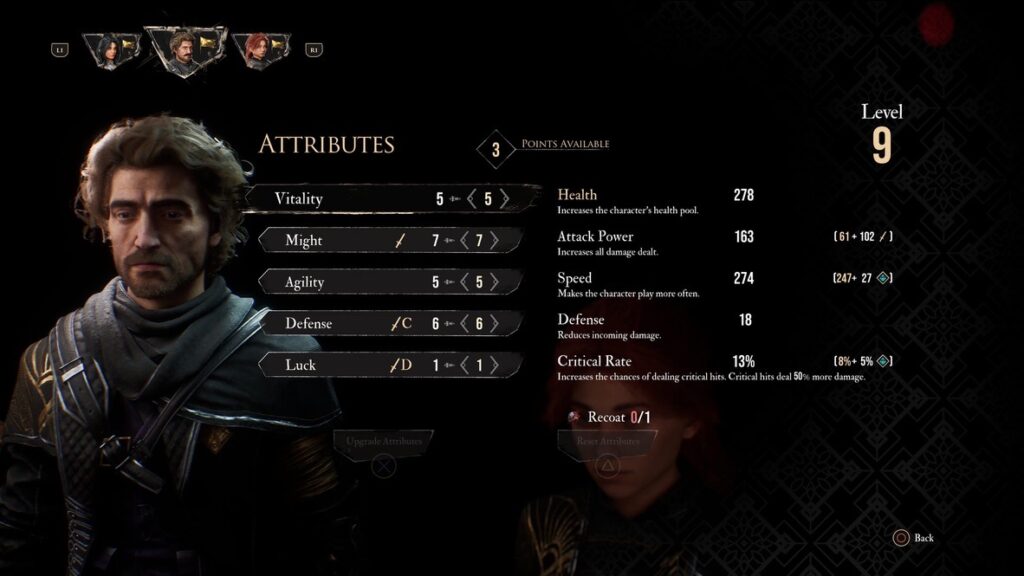
I took the above picture early in my run. It wasn’t until later that I learned that the entire attribute system in the game is a joke. Unless you’re skilled at playing this kind of game (and I’m not; more on that below) every single point must go into Vitality. Putting points into anything else is a waste; it’s just a promise of losing more combats.
Combat
You’ve probably gathered from the above that reason why I rage-quit the game had to do with combat. Let’s look at that.
I mentioned above that when I watched Luality play E33, it didn’t seem too difficult. What I forgot is that Luality is a far better gamer than I am.
Like FFX, combat is arena-based. Your party of three faces off against 1-3 enemy characters. Character position is irrelevant; it’s all skill-versus-skill.
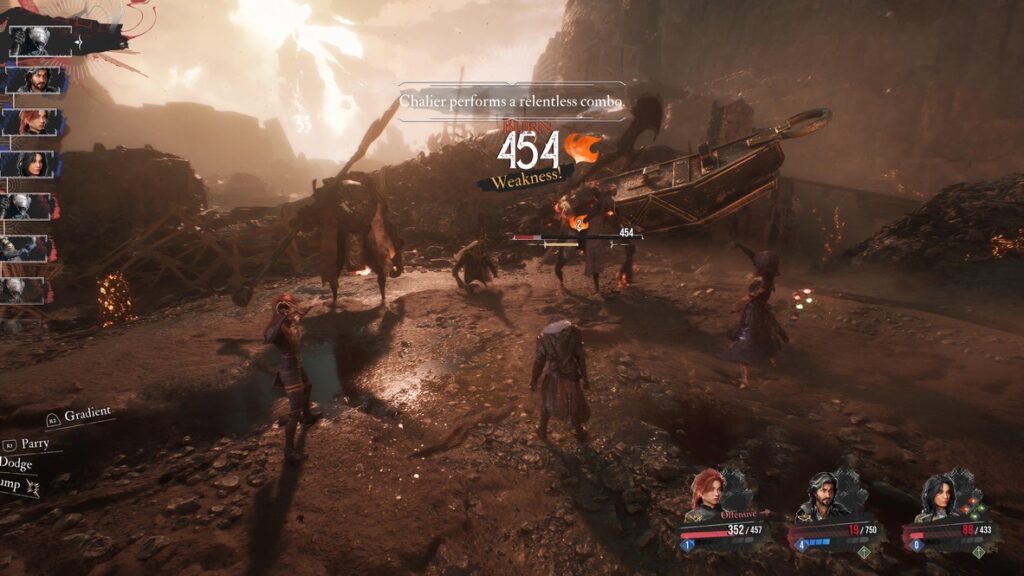
As you might deduce from the above picture, enemies can be vulnerable (or immune) to various elemental effects: Fire, Cold, Lightning, Earth, Light, Dark. How is each creature affected by a given element?
Some games (e.g., Horizon: Zero Dawn) provide a bestiary that gives this information after you’ve encountered a creature for the first time. E33 does not. You have to memorize this information, or write it down. There’s no external guide to the creature types, their attacks, their defenses, nor even their hit points. In the above picture, you can see that a creature took 454 points of damage, but its damage meter is purely relative; you can’t tell that it’s 454 out of some particular number.
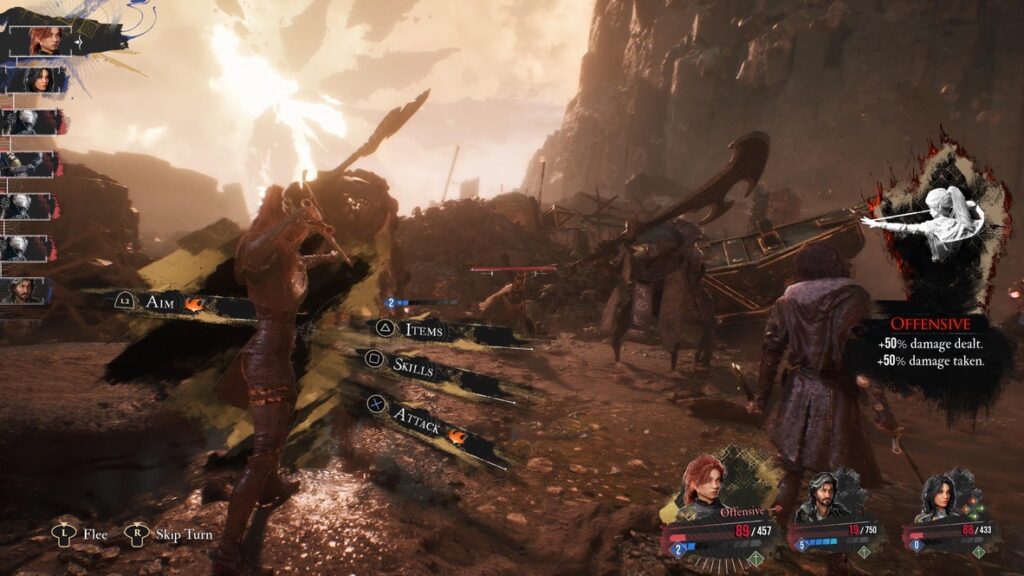
The above picture shows the moment I decided to rage-quit the game… for the first time.
The combats were just too punishing. I couldn’t do enough damage to the enemies before they pummeled the party.
Out of morbid curiosity, I did what I initially resolved not to do, and consulted the web.
Why not consult the web?
If you read my Final Fantasy X essay, you’ll see that I finally quit the game when the combats got so difficult that I wasn’t playing the game any more; the web was. I saw a bit more of the game after I quit, but that’s because Real Angela paid a visit and progressed the game somewhat, before she ran out of time and interest in sitting in my apartment just to play on my PS4.
If the web is playing my game, then why should I waste time playing it? I could watch a pro gamer play it on YouTube.
In retrospect, that’s what I should have done with E33.
As I said, I briefly consulted the web. That’s how I learned that all skill points should be put into Vitality. I also learned that, if I wasn’t willing or able to do side quests, I had to grind to level up my characters.
That’s what I did. Why? I may be unskilled, but I’m also stubborn.
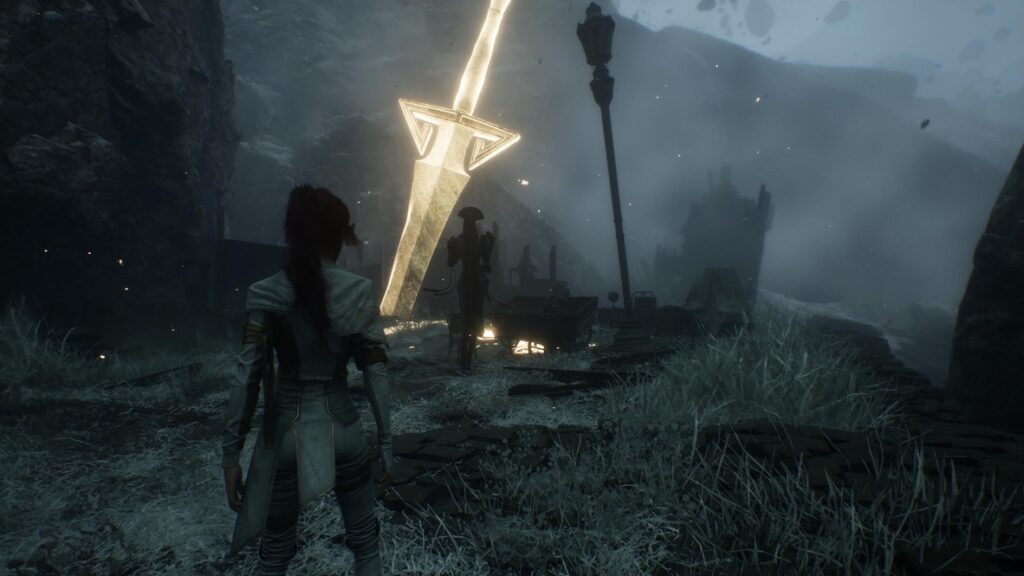
I spent two hours repeating the same encounter: Fight the monsters, run back to a flag, do the same fight, run back to the same flag. Rinse and repeat. For two hours.
This got me from roughly level 25 to level 30.
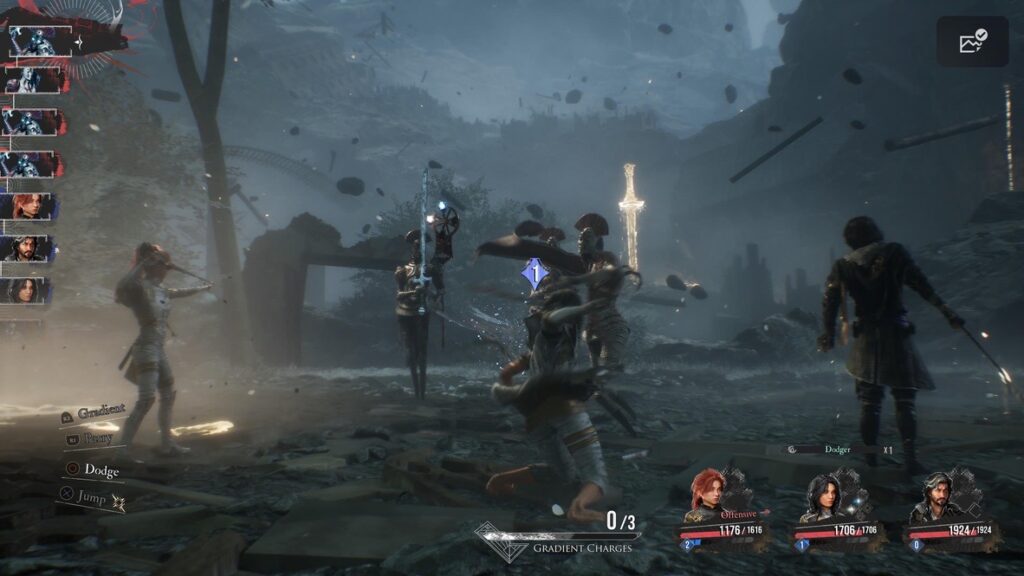
At that point, combats became… well, not easy. But manageable.
As I noted above, by this point my interest in the story had waned. Everything else about the game was still beautiful: art, music, writing (though the dialog left something to be desired, like in FFX).
The continual effort of combat was increasingly discouraging. The boss battles could easily take a half hour.
By accident, I recorded thirty seconds of combat from early in the game:
You can see me looking through Lune’s skills to pick one for which she has enough action points. I settle on Thermal Strike, because she’s attacking an enemy who’s on fire; Thermal Strike will give Lune extra action points on her next turn (assuming she survives that long). Near the end of the video, you can see Maelle continually spinning around.
This is because I’m mashing the Dodge button.
Dodging, Parrying, and other impossible tasks
When it’s one of your characters’ turns, you can take as much time as you’d like to decide your next move: pick a skill, fire a shot, use a potion, or attack with your weapon.
In FFX, when it was the enemy’s turn, they simply attacked. Dodging or evading was a matter of numerics, as it is in Baldur’s Gate 3: the enemy’s attack is compared to your defense, a random number is generated, and the attacks succeeds or fails. There are skills to improve your defenses, but that’s it.
In E33, your defenses take place in real time. You have to defend manually.
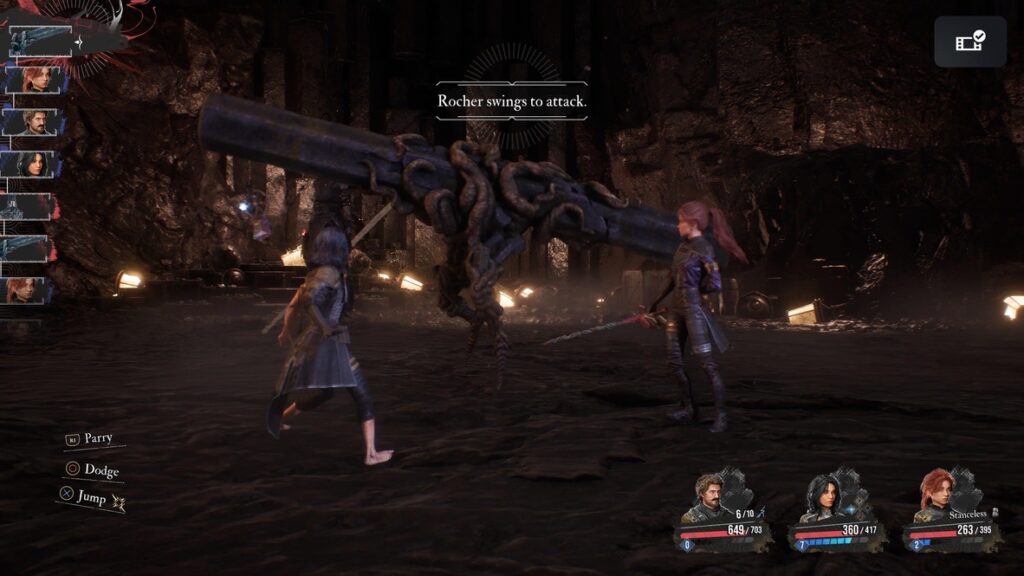
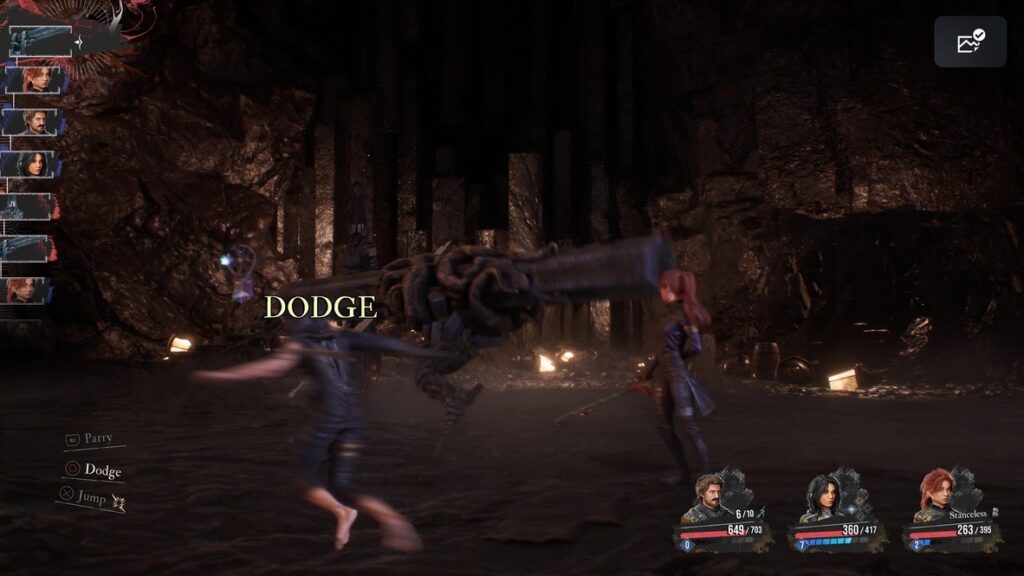
I can’t stress enough how annoying this is. I also can’t stress enough how utterly necessary this is.
Pumping all those skill points into Vitality mitigates the urgency to avoid enemy attacks somewhat. But simply standing there and taking the damage is not a good strategy.
Aside from mitigating damage, a key reason to successfully Dodge or Parry is that it can restore action points.
Detour: action points
Skills cost action points (AP) to use in combat. At the start of combat, by default each character gets 4AP. When you’ve spent them on a skill, they’re spent. Your ability to recover AP is limited:
- You regain 1 AP per turn automatically.
- Some skills (see Thermal Strike in the video above) will restore AP.
- You regain AP if you Dodge or Parry… sometimes. I never got into the details, but most of my AP restoration came from Dodging.
Dodging has two forms: “regular” and “perfect.” If your Dodge is perfectly timed, you get an AP back. (I think; this might also have to do with what Pictos you have or what Skills you’ve purchased.)
Parrying has just one form that requires the same timing as a “perfect” Dodge. Its advantage over Dodge is that if you manage to Parry all of a creature’s attacks, you’ll auto-retaliate with a large amount of damage.
One problem with all of this real-time action: I can’t do it.
I’m serious. I can’t. I don’t have the reflexes for it.
At this point, if you’re a regular gamer (and for some masochistic reason you’ve chosen to get this far into the essay), you’re holding me in contempt. Why am I whining? Anyone can do this.
No, not everyone. I can’t. I tried. I failed.
My only defense against the creature’s attacks, my only real mechanism for regaining AP so I could use my character’s skills. was to mash the Dodge button and hope.
Again, if you’re an experienced gamer, your probable reaction is that I suck at this game.
You’re right.
But I have a reaction of my own: story mode.
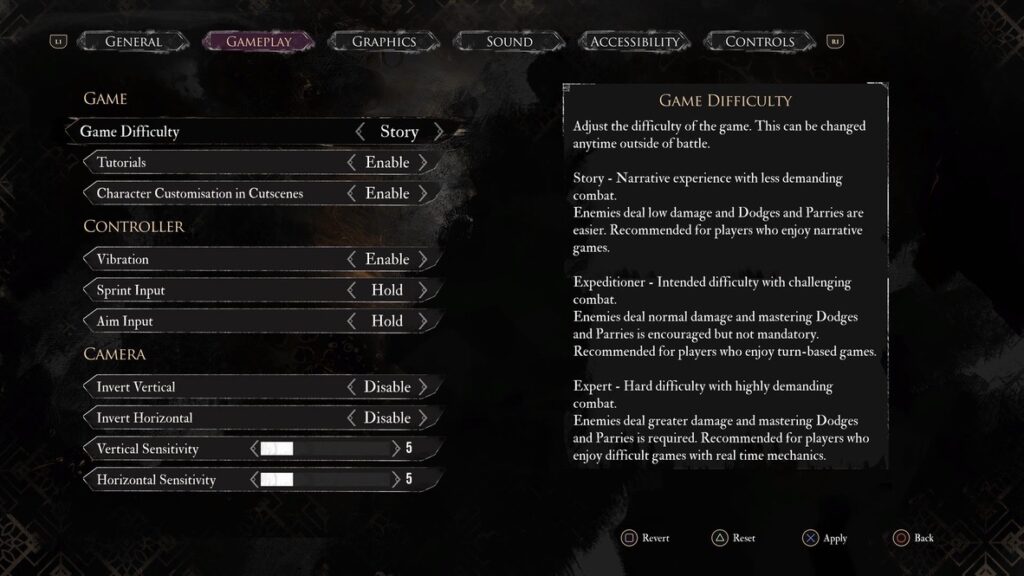
Understanding the timing
If I understand the way the game is supposed to work, you see the creature attacking and you press a button in response. One button (Circle on a PS5 controller) is for Dodge; another one (R1 on a PS5) is for Parrying.
When I say “you see the creature attacking,” I mean that the game animation shows a figure moving in a certain way. You’re expected to respond to with a button press at a certain point in the animation.
Many creatures hit multiple times during an attack, and with different attack patterns. Each creature has its own set of attack patterns and timings between blows.
What you’re expected to do is, through memorization and/or glasschewing, hit the correct button with the correct timing in response to the visual animation.
I tried. I failed.
I tried to memorize the timings and patterns. But there are so many different enemies, with many different attack patterns. As the combats became more challenging and the game became ever more tedious, my willingness to put in that kind of effort declined.
I tried to go by the animation: hit the button when the enemy was at the top of their attack swing; hit as they were about to hit; just as they would have hit. No timing I attempted worked consistently.
Well, some games are just hard.
Story mode.
This is what the designers intended.
STORY MODE.
The feeling of accomplishment when–
STORY MODE!
Don’t blame your inability on–
STORY MODE!
But if you–
STORY MODE!
I didn’t want a combat challenge. I chose the easiest level of difficulty. I wanted the beauty of the game: the art, music, story. I didn’t want the ugliness of having my poor reflexes shoved into my face.
That’s why I picked
STORY MODE!
If anyone thinks that making a game too easy would destroy the experience, see my essay on the game Control. I played that game with difficulty settings set so low that it would make the developers weep. Yet I enjoyed the graphics, the story, and was glad I paid the money for the game.
I regret paying for Expedition 33.
The final rage-quit
This was the encounter that ended the game for me.
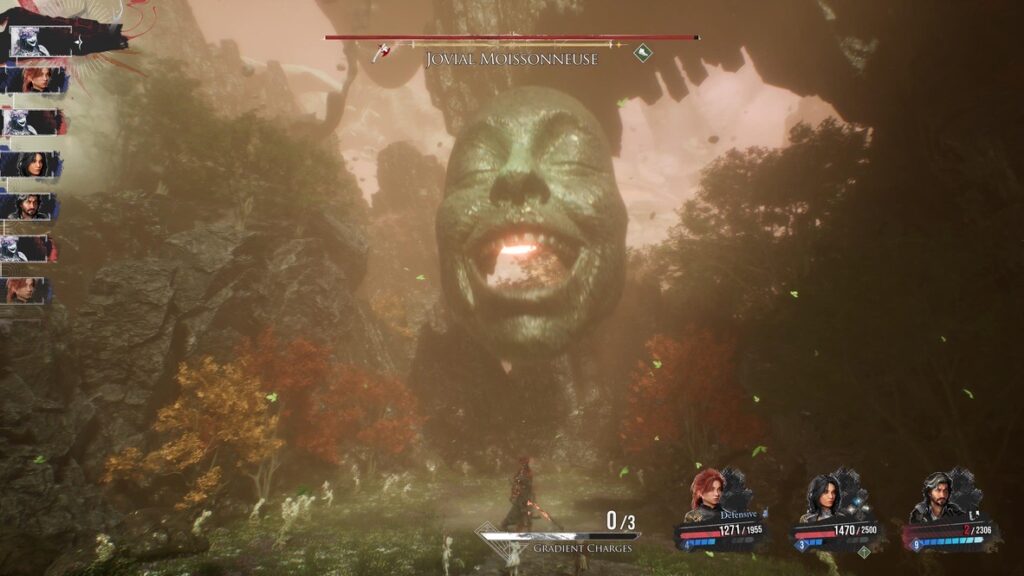
In this combat, the enemy heals roughly 5000 HP in every one of its rounds. That’s roughly 20% of its hit points (based on a visual inspection of its health bar; recall that E33 does not tell you the exact numbers).
Sometimes it will cast the ability “Rush”, which will give it two or more turns in a row. That’s 10K to 15K hit points.
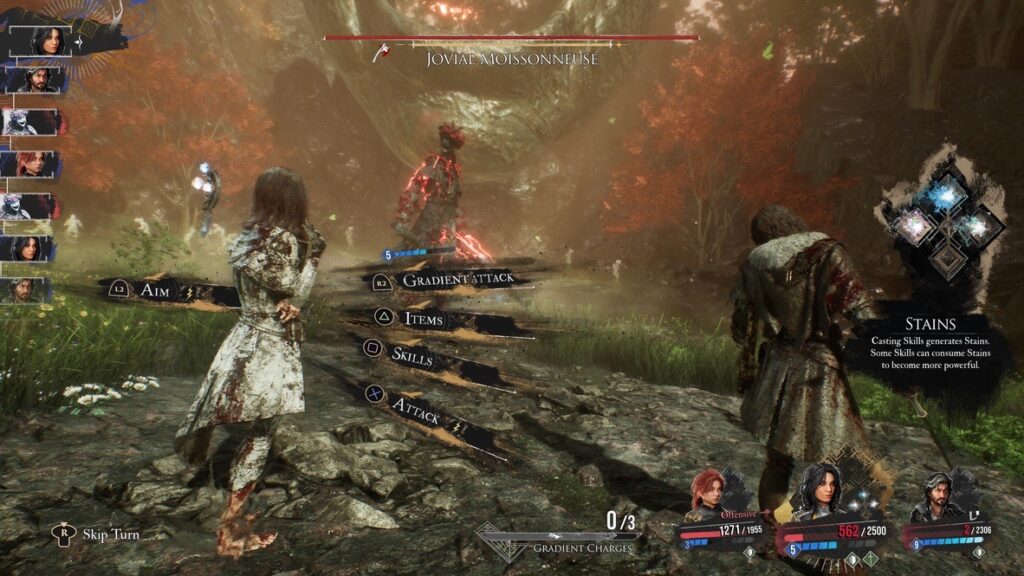
Compare those two screenshots. Note how the enemy’s hit points are the same. That’s because of its persistent healing.
Obviously, it’s basic math: In order to defeat an enemy that heals 5K hit points every turn, I have to do more than 5K hit points every turn.
I tried. There were times when I got the Jovial Moissonneuse down to about 15% of its total hit points.
But something always went wrong. I ran out of potions. The enemy took multiple turns in row. I didn’t have enough AP.
What you’re supposed to do in this combat is parry perfectly every time the enemy attacks. It attacks with multiple-attack combos. If you parry all of them, you’ll respond with so much damage that you’ll exceed its capacity to heal.
I glasschewed through this combat five or six times. I managed to get a sequence of “perfect Parries” (by definition all Parries must be perfect) exactly once.
The rest of the time I was pounded.
Dodges were not good enough. You can’t damage an enemy by Dodging.
I could prolong the agony, but every time I was worn down.
This combat is mandatory. The story demands that it can’t be skipped.
Or rather, it can, but then you’ll have to face an enemy with even stronger healing abilities. The point of defeating the Jovial Moissonneuse is that it removes the healing capability of the later enemy.
My progress in the game, its story, its music, its art, its beauty came to a crashing halt.
Because the developers of the game thought that parry timings were more important than…
(OK, I’ll spare you the font effects.)
…story mode.
Am I being unfair?
No, I don’t think I am. I enjoyed Ghost of Tsushima, a game that also relied on timed button presses in its combat. In fact, I placed it as #2 on my list of highest-rated games.
It’s possible to design a game with a low difficulty mode that still has some reliance on timed keypresses, yet is accessible to those with poor reflexes.
One solution might have been to flash an icon on the screen that indicated the opening of the time window for Perfect Dodging or Parrying. That would have helped, instead of my having to guess the timings from the animations of blurry weapons in the hands of moving figures.
Oh, I forgot: the designers of Expedition 33 don’t believe in providing guidance of any knd.
Conclusions
If you look at my list of lowest-rated games, you’ll see that a uniform theme of my negative ratings is that the games are too difficult, even on their lowest difficulty setting.
Expedition 33 falls squarely within that category.
The other design elements of the game keep me from putting E33 in the “bottom five” of my list. But it definitely goes into “Dishonorable Mention.”
I will never purchase a game from Sandfall Interactive again.
I will never purchase a JRPG again.
If you can manage precision button presses, you may enjoy Expedition 33. I hope you do. I don’t mind if someone else finds pleasure in something that I don’t enjoy.
I think that Real Angela might like this game, for example.
Wrap-up
Going by the game credits:
- Thomas Frappart has their testicles attacked by rabid ducks.
- Florian Torres has crazed squirrels run off with their nuts.
- Victor Boulez loses their manhood in a game of poker.
- I’m sure there are others who should contend with their loss of reproductive organs. A shame they didn’t receive the game credit they deserve.
OK, that eases my rage. A bit.
Edit: I originally said that “Clair Obscur” was the developer of E33. It turns out that “Clair Obscur” was part of the full title of the game: “Clair Obscur: Expedition 33.” The actual developer was Sandfall Interactive. I’ve edited the essay to reflect this. Fortunately, the list of developers who worked on the project remains the same. My thanks to Buster Treatin on BlueSky for pointing this out.
Pingback: Baldur’s Gate 3 – Playthrough 1/14 – Fey and Bellandria – The Argothald Journal
Pingback: Expedition 33 – revisited – The Argothald Journal
Pingback: Senua’s Saga: Hellblade – The Argothald Journal